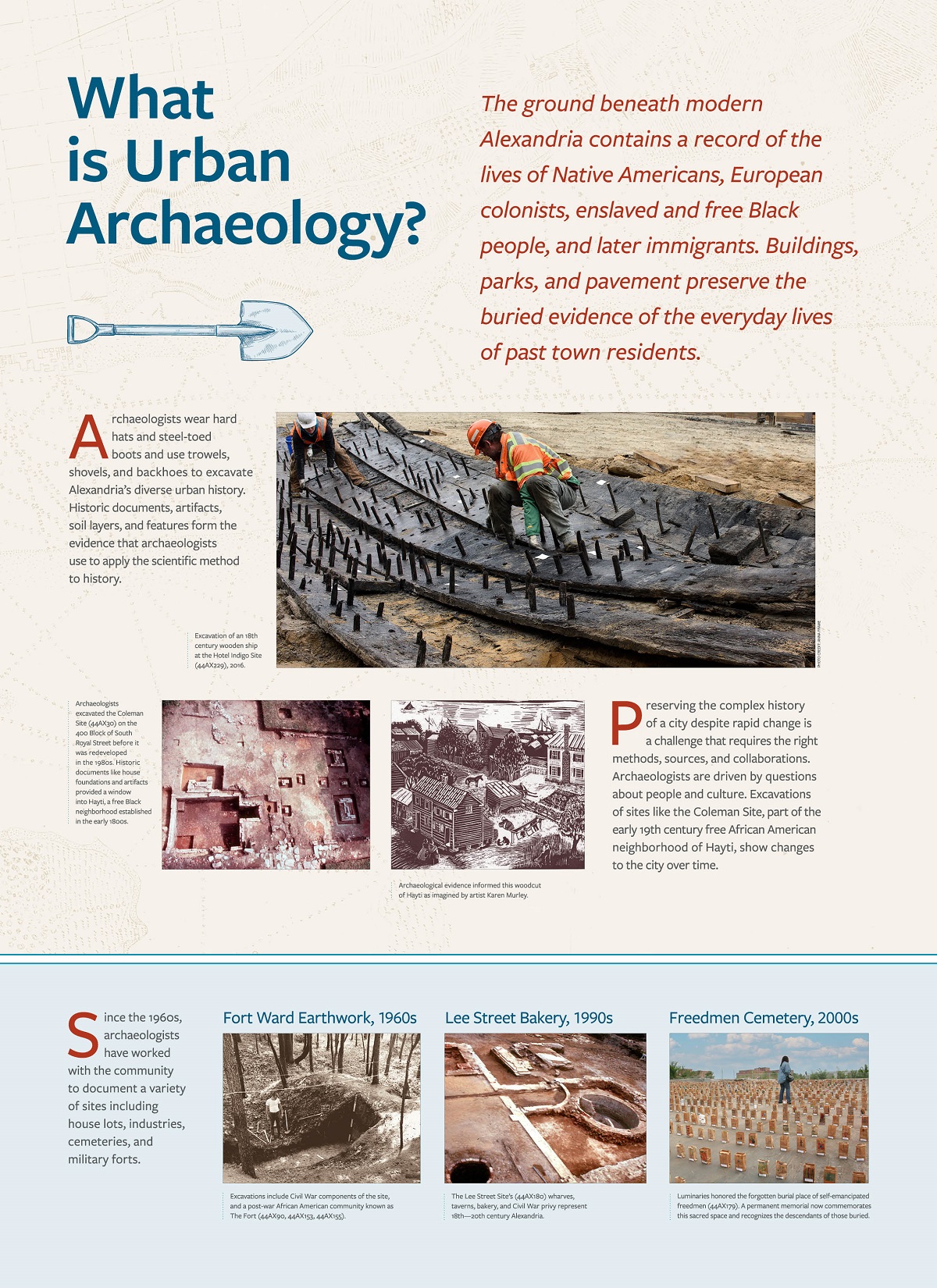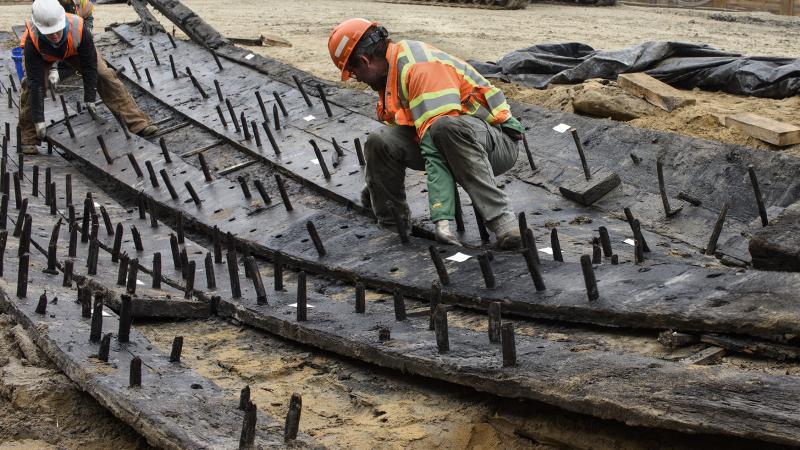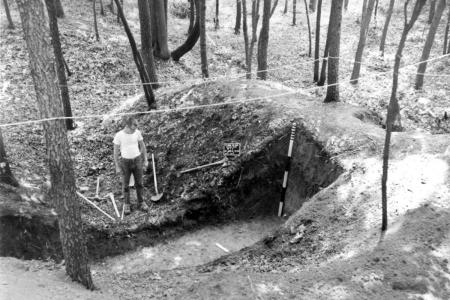
What is Urban Archaeology
A Community Digs its Past: The Lee Street Site
The Lee Street exhibit reveals the archaeological process and the history of Alexandria as seen through the lens of the Lee Street Site (archaeological site 44AX180) and several other waterfront sites.
Preserved on the Lee Street Site was a cross-section of Alexandria's history from its founding in 1749 into the 20th century. Eighteenth-century wharves remained intact below remnants of a bakery, taverns, and residences that had sprung up on the bustling waterfront. The block was later used by the Union Army as a hospital support facility for the huge influx of soldiers during the Civil War. These layers of time were preserved under shallow foundations and a paved parking lot. The exhibit weaves together the story of the wharves, taverns, bakery and Civil War privy excavated at the corner of Lee and Queen Streets with the step-by-step process of archaeology from research and excavation to lab work and conservation.
What is Urban Archaeology?

What is Urban Archaeology?
The ground beneath modern Alexandria contains a record of the lives of Native Americans, European colonists and later immigrants, enslaved and free Black people, and later immigrants. Buildings, parks, and pavement preserve the material culture of the everyday lives of past town residents.
Archaeologists wear hard hats and steel-toed boots and use trowels, shovels, and backhoes to excavate Alexandria’s diverse urban history. Historic documents, artifacts, soil layers, and features form the evidence that archaeologists use to apply the scientific method to history.

Preserving the complex history of a city despite rapid change is a challenge that requires the right methods, sources, and collaborations. Archaeologists are driven by questions about people and culture. Excavations of sites like the Coleman Site, part of the early 19th century free African American neighborhood of Hayti, show changes to the city over time.


Since the 1960s, archaeologists have worked with the community to document a variety of sites including house lots, industries, cemeteries, and military forts.

